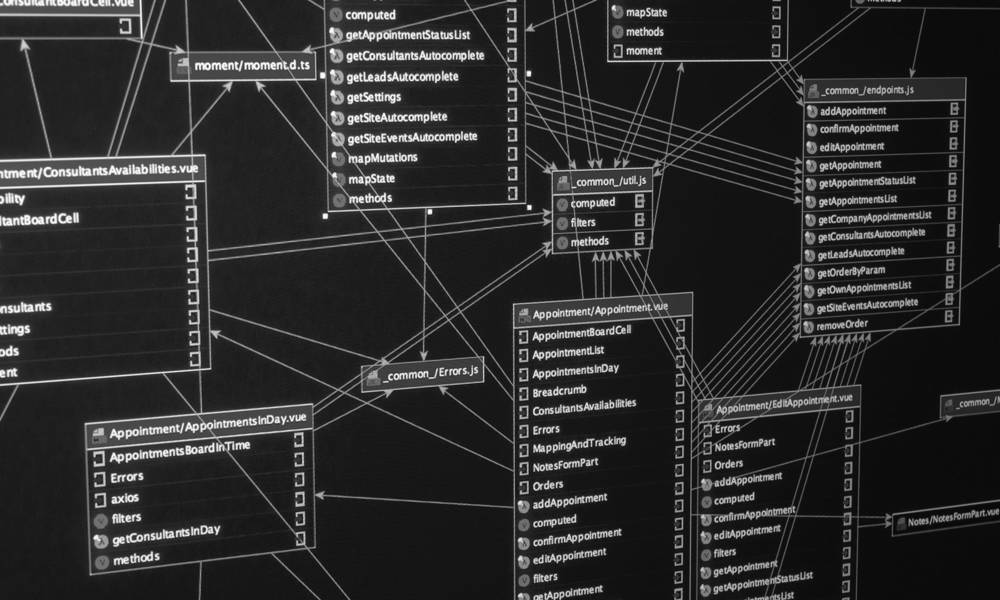All companies of a certain size concentrate much firepower on financial planning. But despite the CFO’s enthusiasm about the subject, the planning process may be characterised by heavy, manual processes and future scenarios about which it is hard to make predictions. In our experience, the problems may be caused by, i.a., the tool used – or the absence hereof. Though Excel may be good for many things, scenario planning is not one of them. So, we hope that you will let us present you with the advantages of using a financial planning and analysis tool instead.
How have others tackled the high financial planning demands? Next time you are to prepare a budget, forecast or what-if scenario, you could start by considering which tools you have in your financial planning and analysis toolbox.
A number of dedicated financial planning and analysis tools have been developed with one specific purpose – to help businesses like yours deliver their financial planning easily, efficiently and safely.
But before jumping directly to all the words of wisdom, let us start at the very beginning. For what is a financial planning and analysis tool in reality?
Financial planning and analysis – what kind of tool?
In brief, a financial planning and analysis tool is a system intended to support the financial planning process end-to-end.
Input for the system is information from other relevant systems and entries made by users, and the output will typically be a total package with, i.a., profit and loss statement, balance sheet, cashflow and other relevant reports for the period concerned.
What distinguishes this type of tool from BI or Analytics software is that it …
- supports scenario management – i.e. the creation, comparison and storage of forecasts, budgets etc.
- makes it possible for, for example, HR to provide input, thereby updating a plan for the positions to be filled in the coming year
- connects historical figures and financial plans, thereby enabling you to continuously compare the figures realised with various financial scenarios
- includes drivers as key parameters that you can adjust in case of, for example, inflation or pay reviews
- makes it possible to manage the access to various data (such as pay data).
Now, the foundation is in place and we can, gradually, start talking about the reasons for choosing a financial planning and analysis tool. We have described that in the four points below.
1: It helps you get away from the tyranny of spreadsheets
As already mentioned, financial planning and analysis tools have been created to energize the planning process, thereby solving the typical problems related to the use of spreadsheets as the primary tool in the process.
In many organisations, Excel is the de facto choice of IT infrastructure as regards financial planning and analysis processes. And spreadsheets can be used for very many things – from planning your mother’s birthday to consolidating international groups. However, this flexibility results in some disadvantages that may have a negative impact on the financial planning and analysis process.
It may, for example, be difficult to manage spreadsheet versions – imagine Budget_2022_4+1_FINAL_V3 in front of you on your desktop. You may be distracted from the core task by having to incessantly double-check and compare versions to ensure that there are no slips.
Consequently, your life will be much easier once the management of versions has been built in as a core functionality so that you are never in doubt:
- That you are always working with the most recent data and calculations
- Who has made changes and when
- Which financial scenario is concerned and that you can lock, store and administer the scenarios centrally.
The above three points are important since they considerably reduce the risk of wasting time and making errors.
In addition, it is sometimes challenging to collect data ending up in a spreadsheet model. This holds true of data from sources such as an ERP, CRM or an inventory system and of input received from employees.
The retrieval of data – whether originating from manual input or from a system – is facilitated by planning tools. Actually, financial planning and analysis tools make it possible for you to build integrations that retrieve and transform data from various systems. Furthermore, the receipt of input from the users becomes more transparent if you build user friendly system-supportive input forms that can be shared via a link. This helps ensure that your financial plans are both accurate and timely.
And, by the way – budget files often require access restrictions. And it is difficult to give access to some information or parts of the model.
Therefore, a Finance employee has to cut and paste data and distribute separate budget files. In this case, input forms can ensure that both the provider of input and Finance save time and energy.
Naturally, the same access problems apply to reporting by means of spreadsheets. On the other hand, this is easy to set up and administer in a financial planning and analysis tool if an employee is to be granted access to only one cost center, one report or the like.
2: You can put changes into (financial) perspective
The role of the CFO has changed notably in recent years. Daily focus is moving in a strategic direction where Finance is analysing and communicating the consequences of internal and external change. In this context, the delivery is a kind of what-if scenario or a sensitivity analysis where the problem areas mentioned earlier may be an obstacle to both quality and topicality.
If Finance needs to go through the whole lot with manual processing of data and preparation of files, such requests may soon develop into genuine time-consuming processes with a wide number of dependencies on persons throughout the organisation. Financial planning and analysis tools have been developed to reduce exactly these challenges.
With such a tool, you can create or copy scenarios, update underlying data and adjust drivers fast, thereby reducing to a minimum the amount of time spent and the number of employees involved. This is especially the case at the end of the forecasting process where there is room for ‘free play’ by Finance who can twist and turn various drivers to examine the organisation’s possibilities and risks without affecting the data collected or creating work for others in the organisation.
Furthermore, you extend the potential for examining commercial possibilities as soon as they get into Finance’s ‘radar’. This could, for example, be the possibility of proactively contacting a new segment of customers or changing the current production mix. In this case, you change the role of Finance from reporting ‘after the fact’ and projecting figures to being a proactive player that helps set the direction and shape the future of the organisation.
3: You can save time without jeopardizing control or accuracy
It is obvious that many hours – if not days – are spent preparing and consolidating various data which must, more often than not, be updated after the budget meetings.
A financial planning and analysis tool makes it easy to update input – also for employees outside Finance – without having to repeat a lot of manual work. This is especially relevant when unexpected changes occur in the market that require Finance to put aside everything and concentrate on mapping the consequences.
The tool can help you make the calculation and consolidation process right away without any need for manual work. So that there is no risk that a forgotten click on the ‘refresh’ button affects the final result.
The likelihood of accidental mistakes and formular errors otherwise not being detected until too late in the budget process is hereby greatly reduced. Since in almost all financial planning and analysis tools, you can lock the logics so that the users can see only their own input and the result hereof – and only the administrator can affect other things. The great advantage of this is that you can always deliver your financial planning without any worries.
4: You can strengthen the correlation between Finance and the rest of the organisation
For those outside Finance, the correlation between their core tasks and Finance’s processes and analyses may be cryptic – to put it mildly.
The key function of a financial planning and analysis tool is to translate operational information such as HR’s plan for future hiring and production’s expected procurement etc. into financial data. But it is one thing to make a correct calculation based on this information, and quite another thing to retain the link and communicate it to the rest of the organisation in a way where a figure is not ‘merely’ a figure. Because this is the key to increased ownership of the input delivered to Finance by the rest of the organisation.
A more complex set of data creates good conditions for preparing thorough and flexible analyses capable of digging deeper without input from technical experts. In addition, you get a greater possibility of making those closest to specific areas validate the output.
Competences – full circle
When digitalising and automating Finance, we combine applications and tools meeting your specific needs. In a way where the solution complements data, processes and the people working hard behind the lines in the best possible way.

In Finance IT Services, we provide you with the consultancy and assistance you need to increase the value of the intersection between Finance and IT – especially as regards optimisation, adjustment and improved use of Finance's many IT systems. Read more about our expertise here.

Would you like to increase the quality of your financial planning?
If you want to save time and increase the quality of your financial planning at one and the same time, it would be a good start to invest in a financial planning and analysis tool – so that you can get rid of cumbersome budget sheets.
Are you in doubt which tool fits your specific needs, and do you need sparring to make your choice? Please do not hesitate to contact Partner Morten Boldsen for a non-binding talk about how to bring your financial planning one step higher.

 en
en
 da
da




